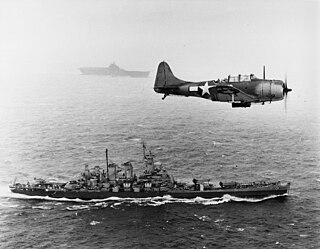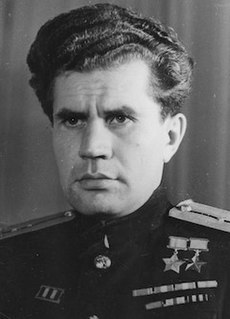Layforce was an ad hoc military formation of the British Army consisting of a number of commando units during the Second World War. Formed in February 1941 under the command of Colonel Robert Laycock, after whom the force was named, it consisted of approximately 2,000 men and served in the Middle Eastern theatre of operations. Initially tasked with conducting raiding operations to disrupt Axis lines of communication in the Mediterranean it was planned that they would take part in operations to capture the Greek island of Rhodes.
During World War II, Operation Abercrombie was an Anglo-Canadian reconnaissance raid on the area around the French coastal village of Hardelot, located south of Boulogne-sur-Mer, in the Pas-de-Calais. It had been scheduled for the night of 19/20 April 1942, but delayed until 21/22 April. The raid was largely unopposed but, on review, the benefits were thought not to have been worth the effort. Due to a navigation error the Canadian detachment lost their way and had to abort.

Naval aviation is the application of military air power by navies, whether from warships that embark aircraft, or land bases.

The Mount Hope Bay raids were a series of military raids conducted by British troops during the American Revolutionary War against communities on the shores of Mount Hope Bay on May 25 and 31, 1778. The towns of Bristol and Warren, Rhode Island were significantly damaged, and Freetown, Massachusetts was also attacked, although its militia resisted British attacks more successfully. The British destroyed military defenses in the area, including supplies that had been cached by the Continental Army in anticipation of an assault on British-occupied Newport, Rhode Island. Homes as well as municipal and religious buildings were also destroyed in the raids.

The Continental Marines were the naval infantry force of the American Colonies during the American Revolutionary War. The Corps was formed by the Continental Congress on November 10, 1775 and was disbanded in 1783. Their mission was multi-purpose, but their most important duty was to serve as onboard security forces, protecting the captain of a ship and his officers. During naval engagements marine sharpshooters were stationed in the fighting tops of the ships' masts, and were supposed to shoot the opponent's officers, naval gunners, and helmsmen.

The Battle of Fort Erie was a bloody skirmish in the afternoon immediately following the Battle of Ridgeway on June 2, 1866 in Canada West. The Fenian force, withdrawing from Ridgeway towards the United States, met and defeated a small force of Canadian militia at Fort Erie, then known as the village of Waterloo.

No. 30 Commando, from 1943–1946 known as 30 Assault Unit, was a British Commando unit during the Second World War, originally formed to gather intelligence.

The GilbertandMarshall Islands Campaign were a series of battles fought from November 1943 through February 1944, in the Pacific Theater of World War II between the United States and the Empire of Japan. They were the first steps of the drive across the central Pacific by the United States Pacific Fleet and Marine Corps. The purpose was to establish airfields and naval bases that would allow air and naval support for upcoming operations across the Central Pacific. Operations Galvanic and Kourbash were the code names for the Gilberts campaign that included the seizures of Tarawa and Makin. Operations Flintlock and Catchpole were aimed at capturing Japanese Bases at Kwajalein, Eniwetok, and Majuro in the Marshall Islands.

The Battle of the Treasury Islands was a Second World War battle that took place between 27 October and 12 November 1943 on the Treasury Islands group, part of the Solomon Islands. The battle formed part of the wider Pacific War and involved New Zealand and US forces fighting against Japanese troops. The majority of the ground forces were provided by the New Zealand 3rd Division.
This article concerns the naval and land battles of Balikpapan in 1942. For information on the 1945 landings by Australian forces in the same area, see Second Battle of Balikpapan.

The Invasion of Salamaua–Lae, called Operation SR by the Japanese, was an operation by Imperial Japanese forces to occupy the Salamaua–Lae area in the Territory of New Guinea during the Pacific campaign of World War II. The Japanese invaded and occupied the location in order to construct an airfield and establish a base to cover and support the advance of Japanese forces into the eastern New Guinea and Coral Sea areas. The small Australian garrison in the area withdrew as the Japanese landed and did not contest the invasion.

The Raid on Cherbourg took place in August 1758 during the Seven Years' War when a British force was landed on the coast of France by the Royal Navy with the intention of attacking the town of Cherbourg as part of the British government's policy of "descents" on the French coasts.

No. 12 Commando was a battalion-sized commando unit of the British Army during the Second World War. Formed in 1940 in Northern Ireland, they carried out a number of small-scale raids in Norway and France between 1941 and 1943 before being disbanded and its personnel dispersed to other commando units.

Nordholz Naval Airbase is a German Naval Air base located near the town of Nordholz in Lower Saxony, 25 km north of Bremerhaven, and 12 km southwest of Cuxhaven. It is the home of Naval Air Command (Marinefliegerkommando), with the Naval Air Wing 3 and Naval Air Wing 5, equipped with the P-3C Orion, Dornier Do 228NG, Mk88A Sea Lynx and Mk41 Sea King.
Operation Kitbag was a raid in Norway by British Commandos of No 6 Commando and No. 12 Commando in December 1941, during the Second World War.
Operation Deep Cut was a raid by British Commandos during the Second World War. It was carried out by No. 1 Section of 5 Troop No. 1 Commando at Saint-Vaast-la-Hougue east of Cherbourg in September 1941.

Operation Rumford was a British Commando raid during the Second World War. It was carried out over the night of 25/26 August 1944, by the Belgian No. 4 Troop of No. 10 (Inter-Allied) Commando who had returned to England in June and were selected to capture the French Isle of Yeu only to find during a reconnaissance that the Germans had already left.
Operation Farrier was a raid by British Commandos during the Second World War on the Yugoslavian island of Mljet.

Viktor Nikolayevich Leonov was a Soviet sailor, two-time Hero of the Soviet Union. Viktor Leonov helped lay the foundation for modern day Russian Spetsnaz operations.
VPB-92 was a Patrol Bombing Squadron of the U.S. Navy. The squadron was established as Patrol Squadron 92 (VP-92) on 26 December 1941, redesignated as Patrol Bombing Squadron 92 (VPB-91) on 1 October 1944 and disestablished on 28 May 1945. It operated the PBY-5A Catalina throughout its operational history.













